1936 New York Canoe Club International Challenge Cup
Hayling Island
Extracts from Gordon K. (Sandy) Douglass "Sixty Years Behind the Mast - The Fox on the Water" and Uffa Fox "Sail and Power"
For further extracts from Gordon Douglass' book see this page.
The first sailing events were the three tune-up races. Having never before sailed in tidal waters with such extreme currents, I soon discovered that I had a lot to learn. For these races the start and finish line was between a buoy and the flagpole in front of the club, just a short distance in from the entrance to the harbor. The entrance channel is only approximately a quarter-mile wide, with a sandbar in the middle exposed at low tide and the deep channel on the western side of the opening, in front of the club. The result of this configuration is that at half tide, either in or out, the water boils through at four and five knots. In the prevailing southerly winds coming in from the English Channel, the course for these early races meant starting downwind with a swift tide behind us, and finishing the race beating upwind against the tide.
We sailed the first race in a steady six-eight-mile southerly, our fleet consisting of six English canoes, all of recent design and build by Uffa Fox, all of them further developments from the 1933 boats. In those conditions my Nymph performed well, and as we sailed up the weather leg, bucking an increasingly swift tide as we approached the finish line - toward the end the tide becoming so swift we barely could make headway against it - I was in the lead, covering tack for tack my closest opponent. He tacked onto port tack, heading for the shore where the current would not be quite so swift, and I tacked to cover him - only to discover that he had tacked at just the right time to clear the stern of a cruiser at anchor while I, covering, was heading right for it. I had to tack and let him go but fortunately was able to pick him up later and to hold my lead to the finish line. I never before had raced where we sailed through boats at anchor.
In the third race I again was in the lead but hotly pursued by Bee Mackinnon whom I covered tack for tack, both of us well in toward the shore to keep out of the swiftest current. The time came when, well upwind of Bee, and allowing for the current, I had reached the lay line for the finish and decided to head for it. Bee continued on inshore, going in so far he almost could reach out and touch the steep bank. There he found an upstream eddy which rapidly carried him up above me, then he headed out into the tide with eased sheets for the finish line. By this time I was very nearly there but was making slow progress against the tide - and Bee came in, across the tide, nipped around the mark and beat me. Local knowledge can mean a great deal. But I had won two of the three races, and Father, Mary and I were optimistic. My Nymph had sailed well. We did realize, however, that the wind had been light, my best weather, and Roger de Quincey and his Wake had not yet arrived on the scene.
Roger, Uffa and Roger's new canoe, the Wake, arrived early Wednesday morning in time for the first heat of the Royal Canoe Club Challenge Cup. Wake, Uffa's latest and best, was his latest development from the English canoes of 1933. Uffa had refined the lines and softened the curves, taking away much of the 'brute-force" appearance of the earlier boats. Being built to the new International rules adopted by both countries, she was lighter in weight, carried a shallower and lighter centerboard, and was built with a shallow vee'd cockpit. The rig was sloop with jib and main. The mast was stepped on deck, a featherweight hollow spar stiffened with double diamond stays and supported by main shrouds and jib stay. As Uffa later wrote, "the plans of Wake show the fastest canoe ever yet designed or built, for on all points of sailing Wake could outsail their other [English] boats, while she was able to defeat the Canadian challenger, even in the light weather that prevailed for the series. This was the only weather in which the challenger stood a chance at all, for like most American canoes she had to be held upright once her mast was stepped to save her from capsizing, whereas our canoes come in, pick up their moorings, and their crews stand and walk about their decks quite happily."
Roger had had the experience of sailing in Cowes Week against the best English canoes, and in addition had spent the week following sailing every day against Uffa. This gave him good practice and enabled him to tune up Wake to perfection. I could see that I would have my hands full... The International Cup races promised to be interesting with the outcome depending on the weather. My only hope appeared to be in light weather.
The International Cup course was set farther into the harbor to get away from the swiftest tide near the entrance, and the races were to be started at the leeward mark because the American Canoe Association has a rule which reads, "All races shall be started to windward when practicable and under a time limit."
For a description of the International Cup races I can do no better than to use Uffa Fox's story of the races, as told in chapter 39, International Canoe Class, of his book, Sail and Power, pages 319-21. After all, Uffa can give a better account of the races than can I, because as an observer he was free to devote his entire time to watching the races, whereas I had an extremely one-sided view, a rear view, so to speak, of the goings on.
First Race, Thursday, August 20, 1936
The wind at the start was westerly and blowing only six miles an hour, the tide running 1-2 knots, so the start was at the buoy in the Chichester arm of the Harbour. The two canoes fighting for a position were late over the line, a point that does not matter when only two are racing, as the idea is to be the first of the two over, and Roger won this sparring contest, Crossing forty-two seconds behind the gun, Gordon coming fifteen seconds later and to leeward of the leader. [In this I was trying for a safe leeward position.] The difference in the weatherly qualities of the boats was most marked, as Roger could lay 1 1/2 points higher to windward than the challenger, and the two on the starboard tack opened out from each other, Roger all the time soaking up to windward as though he was being pushed bodily sideways, Gordon sagging to the south. [This was the same thing we had found back in 1933 against the English.] At this time the sun had gained a great deal of strength, and away inland the clouds on the top of rising currents told us that the wind would come in from the sea and get stronger as the day went on, which meant that it would suck in due south through the mouth of Chichester Harbor quite soon; on the committee boat we had time to watch the competitors and every cloud in the sky, as with a wind six miles an hour things were not happening very fast. Gordon, who had sagged away to the south, benefitted by this shift of wind, for it headed him right off, and when he tacked he could lay the mark. He was now sailing in a southerly wind which was slightly stronger than the westerly streak in which Roger still was sailing. The latter now tacked to the south. On his new tack Gordon was trampling along in style, and as he approached Roger it was seen that he was weathering him. When he had done this, he tacked on Roger, who also tacked, and Gordon fell on top of him, but the Canadian canoe could not tack as easily as the British defender, so Gordon fell back a little and Roger with his wind clear to leeward soon pulled up and gave Gordon a lee bow, so that he was forced to tack. From then on Roger went away, rounding the mark with a 200 yards lead.
The reach to the second mark brought no change, and Roger gybed around this one minute and five seconds ahead, the wind being down to two miles an hour. At this time it was a run back to the finishing line, and Gordon swung his jib around and close:l the gap slightly, then a breeze came and Roger opened up once more and finished the first round one minute ahead. As the wind had gone slightly southerly, most of the windward work had been taken out of the race, and at the end of the first round Roger tacked at once, laying well up for the weather mark. Here he made a mistake by not covering Gordon, who held on the same tack, working out to the south, and was soon in a much stronger breeze, and although slower to windward, because of this better breeze he weathered Roger, and was now on starboard tack; but again, Gordon's canoe, slower in stays, was unable to cover Roger, who slipped through to leeward. As the two now were sailing in the same breeze, Roger immediately began to draw away and had a thirty seconds lead at the weather mark. Half-way along the reach on the second leg of the triangle Gordon pulled up level but to leeward, the two swingIng around the mark together, Roger having to give room. As his was the inside canoe, which was also the weather berth, the Canadian naturally took the lead once they gybed, and at the end of the second round, led by fifteen seconds. Gordon again held on to the south for the stronger breeze there, and Roger tacked and laid straight for the weather buoy with his sheets slightly eased, as the wind had by now established itself in the south and was southerly all over the triangle. There is no doubt that while at the end of the first round Gordon was right and Roger was wrong in his tactics, this time Gordon was wrong and Roger right [no man yet has ever sailed a perfect race - Uffa] and so the latter took the lead once more.
The wind now had reached seven miles an hour, and though still light was enough to make the Canadian use the full length of his sliding seat and Roger half the length of his. This time when Gordon tacked to the western mark he did not jump out on the end of his slide soon enough and she capsized; and though this sounds amazing to us in this country, it must be borne in mind that all the American canoes are so fine and cut away in the bottom that they have no stability whatever. Once their masts are stepped they capsize unless they are held up, whereas our canoes are left on their moorings with their masts standing for days on end. In fact, a man sailing one of the American canoes is exactly like a man walking a tight rope, he balances her all the time with his weight on the sliding seat, and his canoe will capsize if he is forgetful for one second only, everything having to be judged and timed to a fraction of a second.
This day Gordon was using a very heavy oak sliding seat and the extra weight was just enough to make the righting of his canoe a matter of minutes instead of seconds, for although he generally gets his canoe up in five seconds, it took him on this occasion a minute and a half, all of whIch time Roger was reaching for what should have been the weather mark, and led by two minutes around it.
The breeze was now coming stronger, and with the sun burning up the air inshore, there was no doubt it would increase through the afternoon. So in the stronger breeze de Quincey gradually drew away throughout the rest of the race, and led by three minutes and forty-five seconds, there being no windward work at all after the second round, and very little even in that. The nine-mile course took one hour and forty-nine minutes to complete, which is a little better than 4 1/2 knots average speed. The wind at the finish was blowing fourteen miles an hour. The first round took thirty-seven minutes to complete, the second thirty-two minutes, the third twenty minutes, and the last only nineteen minutes, almost half the time of the first. So England won the first race for the New York Canoe Cup.
By way of explanation, my inability to right my canoe after my capsize was caused by more than the heavy oak seat Uffa mentions. The seat was an oak plank three-fourth-inch thick and eleven inches wide, which extended out over the water four teet. While it could have been made lighter, I considered its weight, out over the water, to be effective ballast in heavy weather. However, the seat was not really the problem. The problem lay in the excessive weight of the mast and [a wooden rotating fairing - influenced by Manfred Curry's writing which he was using] which, together with the sails, proved to be more weight high aloft than I was able to lift as I leaned back, standing on the side of the canoe, pulling on the seat at just the length of my arms.
After several futile and time-consuming tries I realized that I needed more leverage. This I was able to achieve by putting a loop of jib sheet around the seat so I could lean farther back to pull. I never before had capsized that boat, and it was a shock to find that I couldn't right it. The weight aloft was not apparent when the boat floated with the mast upright. Uffa was most forbearing in not giving his opinion of, nor even mentioning, my rotating mast fairing which proved to add nothing to performance but did cause the capsize. I was very fortunate that the wind was as light as it was all through these races, offering me my best wind and sea conditions.
By this time it was obvious that my Nymph II was no match for Wake when I used my sloop rig, even with new Ratsey sails. With everything hinging on two races out of three needed for winning, it seemed only logical for me to use my ketch rig, the traditional American rig. It might do the job.
Second Race, Friday, August 21, 1936
Douglass asked for a change of course. There was no doubt the course inside was more suitable to him than the one out at sea, where the wind always was stronger than in the harbor, so he decided against the courses in the open sea, but the legs of the triangle were shortened so that they were half a mile long. On this course the canoes had to sail six rounds to make up the nine miles. The course was shortened by moving the southernmost buoys to the north.
The wind was again gentle, blowing seven miles an hour at the start, and looked like easing rather than hardening. At the start of today's race the two canoes broke through the line within one second of gunfire. De Quincey to leeward had his bow just ahead, so immediately after crossing the line Douglass had to tack to the south to get his wind clear, though he was to weather, and had Roger been a second later the Canadian would have smothered him and forced him to tack. It was one of the best starts I have ever witnessed. As it was a beat to windward. Roger went away from the very beginning, and led by exactly one minute at the weather mark, and on the reach increased this by seven seconds. On the run home he further increased his lead to two minutes fifty-one seconds, increasing it on the second round to four minutes. Gordon Douglass had chosen his ketch rig for todays race, but it did not seem to be any better than the cutter rig, in spite of the fact that he was sailing and handling his canoe better with this rig; with the wind remaining true in direction there was no doubt de Quincey would win, in spite of the fact that at the end of the second round it had died down to four miles an hour. At times he was three-quarters of a mile ahead.
With a time limit of three hours for the nine mile course, it was doubtful whether Roger would complete it in the time with so light a wind. It meant that each round had to be completed in half an hour, and the fifth round took more, for at times the canoes were in very calm spots and hardly moving. However, this was the only round which was so slow, as the wind picked up a little for the last round before it died away altogether. The defender finally won by five minutes fifty-seven seconds. By winning two straight races de Quincey was successful in his defense of the trophy.
The full-bodied defending canoe, built to the maximum dimensions, had defeated the challenger with its finer underwater body in the light weather that had prevailed. In the trial races in Long Island Sound, Nymph II had proved superior, on all points of sailing, to the best canoes America had.
"Sixty Years Behind the Mast - The Fox on the Water" Gordon K. (Sandy) Douglass
"Sail and Power" Uffa Fox
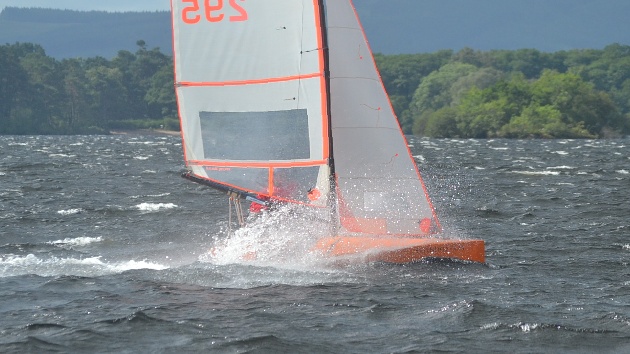
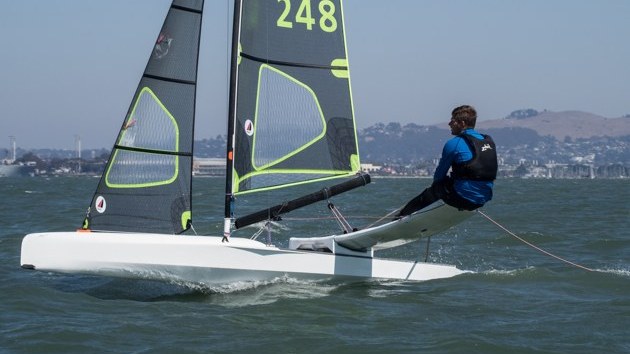
Ulrike_veerkamp.jpg)
Ulrike_veerkamp.jpg)



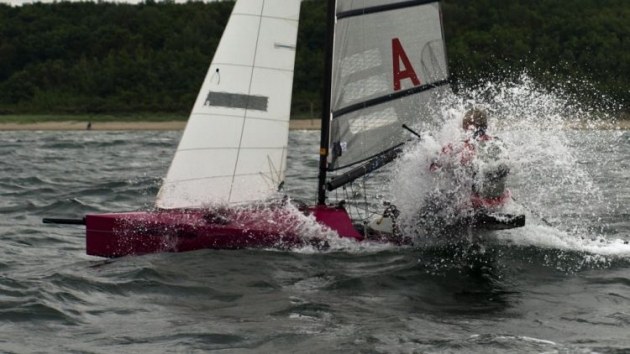
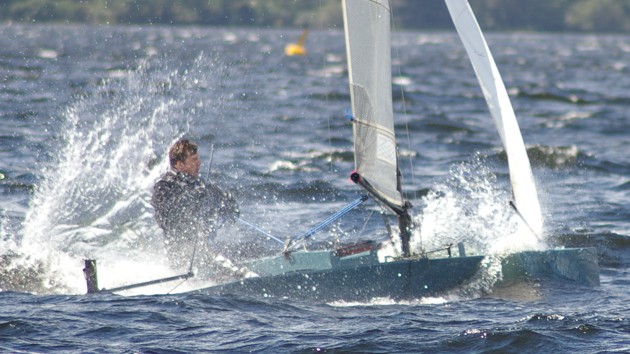
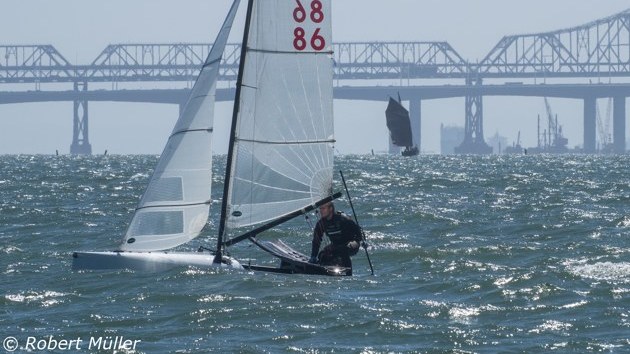
Ulrike_veerkamp.jpg)
Ulrike_veerkamp.jpg)
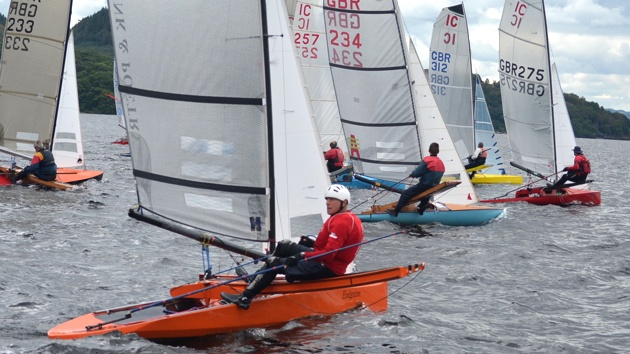
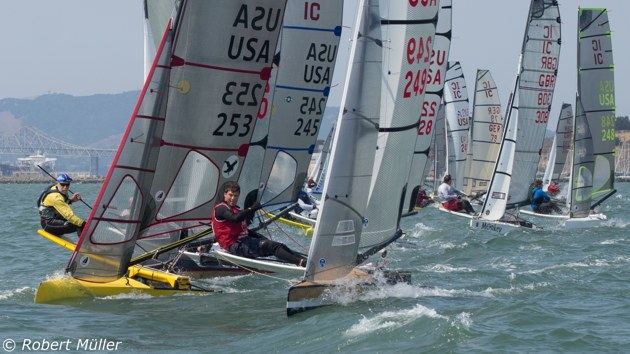
Ulrike_veerkamp.jpg)